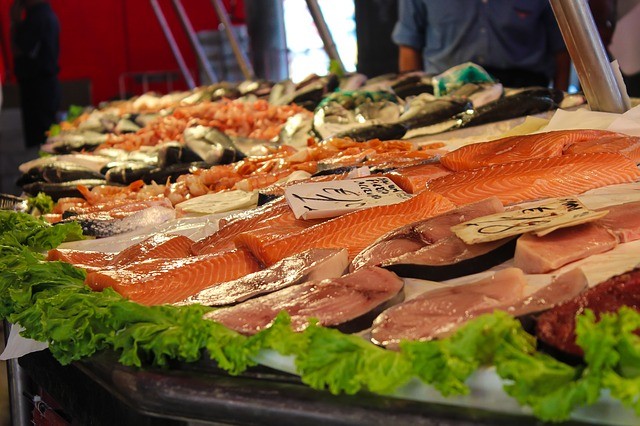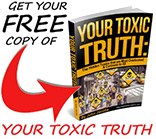Find out which salmon is safe to eat. Check out the article we found over at Bulletproof.
Salmon has a delicious and versatile taste, but despite that, it is a rich source of numerous healthy nutrients. Moreover, it can also be eaten raw, if you know how to choose safe salmon types.
Yet, not all salmon types are the same, and its life may influence its taste, fattiness, and healthy benefits. This article will reveal the ways in which you can recognize healthy salmon and how to properly cook it, in order to enjoy all its potential.
First of all, let us review the ways the color of salmon can indicate its quality. If we compare Wild Alaskan Sockeye and farmed salmon in color, we can notice a huge difference.
Namely, the wild-caught Alaskan sockeye is satisfying red in color. On the other hand, its farmed alternative is much paler, indicating that it has been grown in unnatural and unhealthy conditions.
This difference is due to astaxanthin, which is a bright red molecule which is included in krill, algae, and plankton, and possesses potent properties:
- It improves blood flow
- it strengthens the mitochondria’s cell membranes by preventing damaging oxygen species and thus protects it
- it is a strong anti-inflammatory and antioxidant
- it improves mitochondrial energy production
- According to a study, when used as a supplement, it boosts the strength endurance by over 50%.
Wild salmon eat great amounts of astaxanthin, particularly sockeye salmon, as they consume it while eating astaxanthin-rich plankton. On the other hand, farmed salmon consume food pellets which do not include natural astaxanthin, but farmers add its synthetic version. Yet, the majority of commercial astaxanthin is produced from petrochemicals such as coal, so it is not chemically the same as the natural astaxanthin.
The fish feed also contains fish oil and fish meal which are threatened to be contaminated with dioxin and mercury.
Farmers lately try to reduce the contamination with heavy metal b y substituting fish meal/oil with soy, vegetable oil and corn protein and vegetable oil. Yet, as it is not in their nature to consume corn and soy, the quality of their meat declines.
Therefore, farmers commonly administer antibiotics in order to maintain their health, and trace quantities of them are now included in the salmon we consume. Moreover, the vegetable oils may also contain mold toxins and reduce the important omega-3 fat content in the fish.
Regarding the mercury content found in salmon, the FDA and EPA have examined it and confirmed that wild-caught salmon has constantly been at extremely low risk of contamination with mercury. They even suggest that its consumption is absolutely safe and may be practiced numerous times a week.
If you want to know which type of salmon is best to be eaten, you should review what do you demand from its consumption. Sockeye, Chinook, and coho salmon are all great salmon varieties if they are wild-caught. They have distinct flavors but are all very healthy. So, it is up to you which salmon species to consume.
Namely, Sockeye salmon has a strong flavor and is rich in omega 3s. It contains the highest amount of vitamin D, cholesterol, and astaxanthin, as they usually eat exclusively plankton.
Due to this property, they are extremely difficult to farm, so this kind of salmon is generally always wild. It is extremely beneficial for your health and tastes great when smoked.
On the other hand, Chinook (king) salmon, has the doubled amount of omega-3s than any other salmon type. They live in cold, deep water. Yet, they are kept warm by the omega-3s they contain, as the fat remains liquid in their system and protects them from freezing. Yet, this kind of salmon can be farmed, so you must always be cautious in order not to buy the farmed version.
Another strong version of salmon is the Pacific coho salmon, which contains the third-highest content of fat, just behind sockeye and Chinook. Coho is a rich source of vitamin D and omega -3s.
Cooking salmon
The flavor of smoked salmon is simply irresistible and its only disadvantage is the fact that smoking meat may create histamine, which, if you are sensitive to it, may lead to inflammation. Yet, always struggle to find cold-smoked salmon, as lower temperatures preserve the omega-3s better.
Moreover, in the case you cannot find it raw, you can try the following simple recipe that will preserve the rich and delicious taste, and the lemon juice in it, due to its acid, will effectively balance out the fat.
Next Article: Why You Should Not Eat Tilapia Anymore. Read The Disgusting Reasons Why
Read full article: A Bulletproof Look At Wild Salmon







Laura Richmond
Feb 11. 2016
Yes this article is true, but who can afford wild-caught salmon? If I’m lucky, I can get it on sale for $15.99/lb.
Janice Scheffer
Feb 16. 2016
https://www.youtube.com/watch?v=Dv6mUZ_C6VI
Janice Scheffer
Feb 16. 2016
https://www.youtube.com/watch?v=nyNy2mSnNRo
Health Tips
Apr 22. 2016
Awesome very informative I love
Natural Healing Zone
Jul 28. 2016
Absolutely adore everything like this
Au
Apr 08. 2019
Here is another fish that may interest you. Check this out!